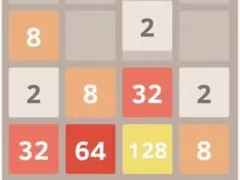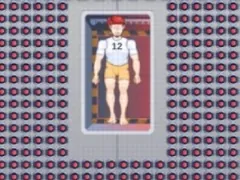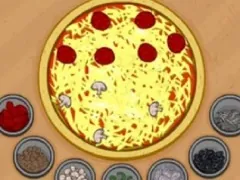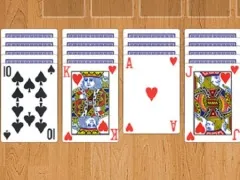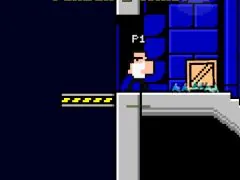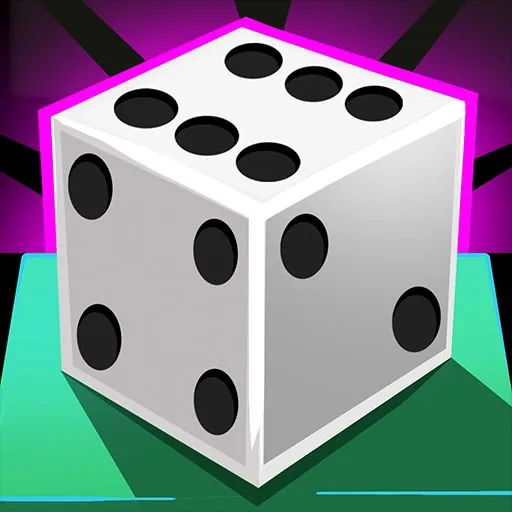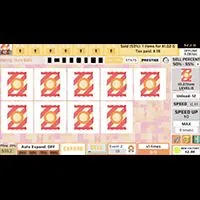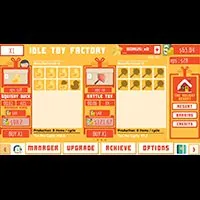PIANO TILES
SIMILAR GAMES
Description
Piano Tiles - Games Unblocked
About Piano Tiles - Games Unblocked
In the realm of digital entertainment, where engaging experiences are constantly sought, Piano Tiles stands out as a captivating and universally appealing game. This is a title that transcends age and skill, offering a delightful blend of rhythm, precision, and musicality. We understand the desire for readily accessible, high-quality games, and Piano Tiles perfectly fits that niche. It’s a game that demands your attention, sharpens your reflexes, and rewards you with a satisfying sense of accomplishment with every perfectly timed tap. Our platform is dedicated to providing a seamless and enjoyable way to experience games like Piano Tiles, ensuring that everyone can join in the fun without any obstacles. We believe that great games should be available to everyone, anytime, anywhere, and Piano Tiles is a prime example of such a universally cherished experience that we are proud to feature.
The Core Gameplay of Piano Tiles
At its heart, Piano Tiles is a deceptively simple yet profoundly challenging rhythm game. The premise is elegant: a cascade of tiles descends upon the screen, and your objective is to tap only the **black tiles** as they appear. The **white tiles**, stark and unforgiving, must be avoided at all costs. This fundamental mechanic is interwoven with a captivating musical backdrop. Each successful tap on a black tile corresponds to a musical note, creating a harmonious symphony as you play. The game's genius lies in its addictive nature. The more you play, the more you want to improve your score, your timing, and your ability to keep pace with the increasingly rapid descent of the tiles. We've found that the satisfaction derived from a long, uninterrupted streak of accurate taps is immense, fostering a sense of mastery and dedication in players. The visual cues are clear, the auditory feedback is precise, and the overall experience is designed to be immediately engaging and endlessly replayable.
Mastering the Rhythm: Timing is Everything
The crucial element that elevates Piano Tiles from a simple tapping game to a true test of skill is **rhythm and timing**. Every black tile that appears is synchronized with a beat or a melody in the accompanying music. To achieve the highest scores and progress further, players must tap each black tile precisely as it aligns with the musical cue. This isn't just about speed; it's about precision. Tapping too early or too late on a black tile will result in a missed note, and in the unforgiving world of Piano Tiles, even a single missed note means the end of your current game. We recognize that developing this rhythmic precision takes practice. It’s a journey of training your ear and your reflexes to work in perfect synergy. As the game progresses and the tempo of the music increases, the challenge intensifies, pushing players to their limits. This escalating difficulty curve is a key reason why Piano Tiles remains so compelling, offering a constant stream of fresh challenges and opportunities for improvement.
Variety of Musical Compositions
One of the most significant draws of Piano Tiles is the sheer **variety of musical compositions** that accompany the gameplay. The game doesn't limit itself to a single genre; instead, it offers a rich tapestry of musical styles. Players can find themselves tapping along to the grandeur of **classical masterpieces**, experiencing the intricate melodies of composers like Beethoven or Mozart, or diving into the energetic beats of **contemporary hits**. This diversity ensures that there is always a musical theme to suit a player's mood or preference. We believe that the musical experience is integral to the game's appeal. Whether you prefer the timeless elegance of classical music or the modern pulse of popular songs, Piano Tiles provides a soundtrack that enhances the gaming experience, making each session feel fresh and exciting. This broad selection of music not only adds to the enjoyment but also caters to a wider audience, making the game accessible and appealing to players with diverse musical tastes.
The Challenge of Increasing Speed
As players become more adept at the core mechanics of Piano Tiles, the game introduces an escalating challenge through **increasing speed**. The tiles begin to descend at a leisurely pace, allowing ample time for players to identify and tap the black ones. However, as a game progresses and players successfully navigate through successive rounds, the speed at which the tiles fall dramatically increases. This heightened tempo transforms the game into a true test of **reflexes and hand-eye coordination**. What might have started as a relaxed tapping exercise quickly evolves into a high-octane battle against time. We observe that this dynamic shift is what keeps players on the edge of their seats. The feeling of being able to keep up with the accelerating pace, to react instantly and accurately to the rapidly appearing black tiles, is incredibly exhilarating. It's this constant push for faster, more precise gameplay that makes Piano Tiles so addictive and rewarding.
Why Piano Tiles is a Staple in Unblocked Games
The appeal of Piano Tiles extends beyond its engaging gameplay and diverse music selection. Its fundamental design makes it an ideal candidate for inclusion in **unblocked games** libraries. The game requires no complex installations or downloads, and its core mechanics are easily understood, allowing players to jump right into the action. For individuals in environments where internet access might be restricted, such as schools or workplaces, having access to games like Piano Tiles provides a welcome opportunity for a mental break and a moment of focused enjoyment. We understand the importance of providing accessible entertainment that can be enjoyed without complications. Piano Tiles perfectly embodies this ideal, offering a rich and satisfying gaming experience that can be accessed and played with ease, making it a consistent favorite among users seeking enjoyable diversions.
Accessibility and Ease of Play
One of the most compelling reasons for the enduring popularity of Piano Tiles, especially within the **unblocked games** community, is its **accessibility and ease of play**. The game’s interface is intuitive; the objective is straightforward. Players don’t need to spend hours learning complex controls or understanding intricate game systems. The core action involves simple taps on the screen, making it playable by virtually anyone with a touch-enabled device. We’ve seen firsthand how this lack of a steep learning curve allows players of all ages and gaming backgrounds to pick up and enjoy Piano Tiles immediately. This immediate engagement is crucial for games intended for quick sessions or for those seeking a readily available form of entertainment. The straightforward nature of the game ensures that the focus remains squarely on the rhythm and the challenge, rather than on deciphering how to play.
A Perfect Break from Routine
In settings where prolonged periods of focus are required, such as educational institutions or professional environments, the opportunity for a brief, engaging distraction is invaluable. Piano Tiles serves as an excellent **perfect break from routine**. Its fast-paced nature and clear objectives provide a concentrated burst of activity that can help refresh the mind. Unlike more demanding games that require significant time investment, a round of Piano Tiles can be completed in a matter of minutes, offering a quick yet satisfying mental reset. We believe that offering games like Piano Tiles provides a valuable service by allowing individuals to recharge their mental batteries without compromising their ability to return to their tasks with renewed focus. The game’s ability to deliver a complete and engaging experience in short bursts makes it an ideal choice for anyone needing a quick escape.
The Thrill of Uninterrupted Play
The core of the excitement in Piano Tiles lies in the pursuit of **uninterrupted play**. Achieving a long streak of perfectly tapped black tiles, where the music flows seamlessly and the screen is a blur of precise movements, is an incredibly rewarding experience. This pursuit of perfection and the desire to push one's own score higher are powerful motivators. The game thrives on this addictive loop of attempt, improvement, and success. We understand that players are looking for experiences that offer a tangible sense of progress and accomplishment. In Piano Tiles, each successful game is a testament to the player's improved reflexes, timing, and concentration. The thrill of extending a streak, of hearing the music play out perfectly as you master the rhythm, is a core component of its widespread appeal and why it remains a go-to title for many.
Exploring Different Modes and Variations
While the classic mode of Piano Tiles, focusing on tapping black tiles and avoiding white ones, is the foundation, the game often introduces variations and alternative modes that add layers of complexity and replayability. These different experiences cater to a range of player preferences and skill levels, ensuring that the game remains fresh and engaging over time. We are committed to offering diverse ways to enjoy our featured games, and the various iterations of Piano Tiles provide exactly that. Whether you are a seasoned player looking for a new challenge or a newcomer wanting to ease into the gameplay, there are likely modes designed to suit your needs.
Classic Mode: The Original Challenge
The **classic mode** of Piano Tiles is where the journey often begins for most players. This is the quintessential experience that defines the game: the rapid descent of black tiles that must be tapped in rhythm, with the ever-present danger of accidentally tapping a white tile. This mode is a pure test of **reflexes, timing, and concentration**. As the game progresses, the speed accelerates, demanding quicker reactions and more precise movements. We find that the classic mode is the benchmark against which all other experiences in Piano Tiles are measured. It’s where players hone their fundamental skills, learning to anticipate the rhythm and execute their taps with accuracy. Mastering this mode is a significant achievement, and it forms the bedrock for exploring any other variations that might be available. The simplicity of its design belies the profound depth of skill required to achieve high scores in this original, iconic gameplay.
Other Gameplay Variations
Beyond the foundational classic mode, Piano Tiles frequently introduces other gameplay variations designed to test players in different ways. These might include modes where the goal is to tap as many tiles as possible within a set time limit, modes that introduce moving tiles or tiles that disappear, or even modes that require a specific sequence of taps. Some variations might even challenge players to tap on tiles of different colors, adding a new dimension to the color recognition aspect of the game. We actively seek to provide access to these different gameplay styles because they cater to a broader audience and offer fresh challenges for experienced players. These variations ensure that the core enjoyment of rhythm and reaction is presented in new and exciting formats, preventing the game from becoming monotonous and continuously providing new ways to engage and test one's skills.
The Role of Different Difficulty Settings
To accommodate players of all skill levels, Piano Tiles often incorporates **different difficulty settings**. These settings can influence the initial speed of the tiles, the complexity of the musical patterns, or even the density of the tile patterns appearing on the screen. A beginner might start with an easier setting to get a feel for the game's rhythm and controls, gradually progressing to more challenging levels as their confidence and skill grow. Conversely, experienced players can immediately jump into higher difficulties to test their ultimate capabilities. We believe that offering adjustable difficulty is crucial for player retention and satisfaction. It allows everyone to find a level of play that is both enjoyable and challenging, fostering a sense of progress and accomplishment regardless of their starting point. This flexibility ensures that Piano Tiles remains an accessible and rewarding experience for a wide spectrum of players.
Tips for Achieving a High Score in Piano Tiles
While the game's mechanics are straightforward, achieving truly high scores in Piano Tiles requires a combination of focus, practice, and strategic play. Many players find themselves hitting a plateau, and it's often these subtle optimizations that can lead to significant improvements. We've observed that players who dedicate themselves to understanding the game's nuances consistently achieve better results. The pursuit of a personal best score is a rewarding journey, and with the right approach, it's an achievable goal for any dedicated player.
Develop a Consistent Tapping Technique
A fundamental aspect of excelling in Piano Tiles is to **develop a consistent tapping technique**. This means finding a rhythm and a method of tapping that feels comfortable and efficient for you. Some players prefer using their fingertips, while others might find success with a more pronounced tap. The key is to find a technique that allows for quick, accurate, and repeatable movements. Avoid erratic or overly forceful taps, as these can lead to mistakes and fatigue. We encourage players to experiment with different finger placements and tapping pressures to discover what works best for their individual style. Consistency in your technique will lead to greater accuracy and endurance, allowing you to maintain focus for longer periods and achieve higher scores.
Listen Actively to the Music
The **music in Piano Tiles is not merely background noise; it is your guide**. The most successful players are those who can **listen actively to the music** and use it to anticipate the appearance and rhythm of the black tiles. Each note, each beat, is a cue. As the game progresses and the visual cues become more rapid and potentially overwhelming, relying on the auditory feedback becomes increasingly important. We strongly advise players to immerse themselves in the soundtrack, paying close attention to the melodic patterns and the underlying tempo. By internalizing the rhythm of the music, you can train your reflexes to react almost instinctively, significantly reducing the reliance on purely visual tracking and improving your overall accuracy and speed.
Maintain Focus and Minimize Distractions
In a game that demands split-second reactions, **maintaining focus and minimizing distractions** is paramount. The moment your attention wavers, even for an instant, can result in a missed tile and the end of your game. This means finding a quiet environment where you can concentrate fully on the screen and the audio cues. Avoid playing when you are tired or multitasking. We understand that in busy environments, finding perfect quiet can be challenging, but creating even a few minutes of dedicated focus can make a significant difference. The more consistently you can keep your attention locked on the game, the more likely you are to achieve those extended streaks and push your score to new heights.
Practice Regularly and Gradually Increase Difficulty
Like any skill-based activity, improvement in Piano Tiles comes with **regular practice**. There is no substitute for dedicated playtime. Start with easier modes or lower difficulty settings to build your foundational skills and confidence. As you become more comfortable and consistent, gradually challenge yourself by increasing the speed or moving to more complex musical patterns. We believe that a gradual approach to increasing difficulty is more effective than constantly jumping to the hardest settings. This progressive challenge allows you to solidify your understanding and muscle memory at each stage, building a strong base for tackling more demanding gameplay. Consistent, focused practice is the most reliable path to mastering Piano Tiles and achieving your highest scores.
The Enduring Appeal of Piano Tiles
The question of why a seemingly simple game like Piano Tiles continues to captivate millions is multifaceted. It’s a game that taps into fundamental human desires for challenge, rhythm, and accomplishment. Its accessibility ensures a broad audience, while its depth of skill keeps even the most dedicated players engaged. We are continually impressed by the longevity of its appeal, a testament to its excellent design and the pure joy it offers.
A Universal Language of Rhythm
Music and rhythm are universal. Piano Tiles leverages this inherent human connection, translating musical concepts into an interactive and engaging experience. Regardless of a player’s background or prior gaming experience, the fundamental appeal of tapping to a beat is universally understood and enjoyed. This **universal language of rhythm** is a key reason why the game transcends cultural and demographic boundaries, finding fans across the globe. We believe that this intrinsic connection to music is at the core of its widespread and lasting popularity.
The Satisfying Blend of Skill and Chance
While skill is undoubtedly the dominant factor in Piano Tiles, there's also an element of chance that keeps the gameplay exciting. The patterns of the tiles, while often predictable to a degree, can also present unexpected sequences that demand quick adaptation. This blend of **skill and chance** creates a dynamic gameplay experience where players are constantly tested and engaged. We find that this balance is crucial for maintaining player interest; it's not so easy that it becomes predictable, nor so difficult that it becomes frustrating. The game offers a rewarding experience for those who dedicate themselves to improving their skills, while still providing moments of delightful surprise.
A Gateway to Musical Engagement
For many, Piano Tiles serves as an accessible **gateway to musical engagement**. It introduces players to various musical styles and composers in a fun and interactive way. The act of playing along with a piece of music can foster a deeper appreciation for its structure, melody, and rhythm. We’ve heard from many players who have discovered new musical genres or revisited classical pieces thanks to their experiences with Piano Tiles. It’s more than just a game; it’s an introduction to the beauty and complexity of music, presented in an easily digestible format that encourages exploration and enjoyment. This educational aspect, wrapped in an entertaining package, further solidifies its position as a cherished title.
Piano Tiles is a fast-paced rhythm game that challenges players to tap on the black tiles while avoiding the white ones, all set to a variety of musical compositions ranging from classical masterpieces to contemporary hits. Each tap must be timed with the rhythm of the music, and accuracy is crucial as a single mistake means the game is over. As players progress, the speed of the tiles increases, testing reflexes and promoting a thrilling gameplay experience.
Enhance Your Experience with Various Modes
The game features several modes that cater to different skills levels and musical tastes. Whether it’s racing against the clock in Time Trial, playing through preset songs in Classic mode, or exploring lengthy compositions in Endless mode, Piano Tiles offers a dynamic platform for improving hand-eye coordination and musical perception. New songs are regularly added, keeping the game fresh and engaging for returning players. This simple yet addictive game has captured the attention of millions, offering a compact musical challenge at your fingertips.
